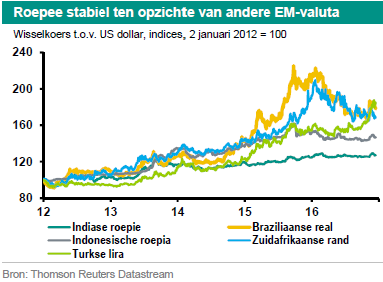Contents:


A company can save money by deferring payments to suppliers and taking advantage of available credit. Alternatively, it can spend money by purchasing with cash—both options have an impact on working capital management. A high turnover ratio suggests that management is maximising the use of a company’s short-term assets and liabilities to boost sales.
If this figure is low, it means you are having difficulty meeting your daily business expenses and paying off your creditors. Maintaining adequate liquidity is critical not only in your personal life but also in your enterprise. Without this, running your daily operations or improving the revenue figures will be tough. Liquidity further helps your company invest in new infrastructure and new ventures. Generating cash at the right time is vital to make necessary payments without missing out on any opportunities.
In order to carry on the business, the company has to plan for future needs and also to meet its day-to-day expenses, such as payrolls or paying for raw material, tools, and supplies. As discussed earlier, net working capital is current liabilities subtracted from current assets. Positive net working capital means that your business’ finances are healthy, while negative working capital means the opposite. The parts of working capital are inventory, accounts receivable, accounts payable and cash & cash equivalent. If the firm decides to replenish the inventory, the working capital would not show any change. The company might be in some trouble if these current assets are not exceeding the liabilities at that moment.

The unpredictable nature of business makes it tough for business leaders to manage it. Anjana Dhand is a Chartered Accountant who brings over 5 years of experience and a stronghold on finance and income tax. She is on a mission to stamp out unawareness and uncomplicate boring personal finance blogs to sparkle. Anjana believes in the power of education in making a smart financial decision.
Inventory Turnover Ratio
Owners of small and medium sized businesses may take advantage of its simple qualification criteria . It is calculated by Adding Inventory days and Receivable days and it subtracting the Payable days. The company should maintain its Working Capital ratio between 1.2 to 2 which is best for any company as it shows that the company is running its business smoothly. A very high or ratio above 2 is also not good for the company as it also gives a negative impact on the company. The working capital ratio indicates readily available cash with the Company. A ratio between 1.2 to 2 is considered to be a healthy working ratio.
Fixed capital is usually funded by long-term sources of finance such as equity, long-term loans, and debentures. Fixed capital refers to the long-term capital invested in a business for acquiring fixed assets, such as land, buildings, machinery, and equipment. Negative current capital can indicate that a company is relying heavily on short-term financing, which can be risky if financing becomes more expensive or difficult to obtain.
What is Working Capital Ratio?
However, businesses can make a mistake by stocking raw materials that will be needed the following season. But in reality, they are preventing themselves from taking advantage of a fantastic opportunity by blocking cash. When a company’s accounts payable are extremely high, the working capital turnover indicator may be deceiving. This ratio would be indicating that the company is struggling to pay its invoices as they become due. Working capital affects the balance sheet by impacting a company’s liquidity and solvency. A company with $50,000 in current assets and $75,000 in current liabilities has negative current capital of $25,000.
Gear Energy Ltd. Announces First Quarter 2023 Operating Results – StreetInsider.com
Gear Energy Ltd. Announces First Quarter 2023 Operating Results.
Posted: Wed, 03 May 2023 20:04:13 GMT [source]
It does not take into account the timing of cash inflows and outflows, which can impact a business’s ability to meet its short-term obligations. Working or operating capital is a crucial part of a business’s financial health. Having adequate current capital is essential for maintaining liquidity and avoiding financial distress. It enables businesses to take advantage of growth opportunities and make strategic investments.
These liabilities are necessary to pay for goods and services the business has already received or cover short-term cash flow needs. The trade payables or accounts payable are an important part of the current liabilities. Additionally, the accounts payable notify this amount which a firm needs to pay against the credit purchases that have been made. Experts also recommend that businesses adopt some well-rounded management strategies to ensure timely payments for a smooth cash flow. By effectively utilising a company’s resources, working capital management can improve cash flow management and earnings quality. The timing of accounts payable is also part of working capital management (i.e., paying suppliers).
What is working capital management?
Current assets should be compared with the current liabilities to get a better understanding of a business’s operational efficiency. That is, how efficiently a business utilizes its short term assets to meet its day-to-day cash requirements. Measures a company’s ability to manage its day-to-day costs consistently. Cash on hand, inventory, accounts payable, and accounts receivable are just a few examples of what is contained in a company’s balance sheet. It is both a short-term financial indication and a measure of a company’s overall performance in the near term. Every company has to go through a cycle from raw material procurement to production to distribution and then to sales.
- For example, a manufacturing company may require more operating capital to fund its inventory and production costs than a service-based business.
- Inventory is a very important component of the company’s current assets, which is a result of the essential for the proper management of the working capital.
- A ratio above two generally indicates there are some extra assets that are not currently invested by the organization and would represent a missed opportunity.
- Credit allowed by the creditors is 4 months from the date of the delivery of raw material and credit given to debtors is 3 months from the date of dispatch.
- That is, how efficiently a business utilizes its short term assets to meet its day-to-day cash requirements.
It means the company is waiting to receive payment from clients to create available cash. A working capital cycle is a business cycle that describes the flow of money in a business, from its suppliers to its customers. It’s also often known as the “cash flow.” The cash flow refers to the money inflow to cover your bills and expenses. It helps you understand how much money you need at any given time and helps you plan for periods when less revenue is coming in than usual. Prior to understanding working capital cycle, let us start with the term working capital. Working capital is the difference between net current assets and net current liabilities.
The working capital cycle formula differs from business to business as a manufacturing industry has more phases than a retailer. Collect the payment that is yet to be received from the customers and motivate the customers to make the payment earlier. Your curiosity brought you here, and terms like working capital cycle, working capital and others can be confusing at times.

One needs to deduct these items from current assets or gross working capital to reach net working capital. Difference between gross working capital and net working capital is, therefore, essential to understanding its usage as a financial health indicator. Hence those assets that can be converted into cash within a year will fall under the current assets category. CAs, experts and businesses can get GST ready with ClearTax GST software & certification course. Our GST Software helps CAs, tax experts & business to manage returns & invoices in an easy manner.
Business Losses
Its working capital may measure a company’s ability to meet its day-to-day expenses, including cash, accounts payable, inventories, accounts receivable, and short-term debt. Sometimes a company’s profits are tied up in investments or other long-term assets, leaving them short on cash when it comes to immediate needs. That’s when you need working capital- the cash and other liquid assets can be used to cover these short-term expenses.
FlatexDEGIRO : Explanation of shareholders’ rights MarketScreener – Marketscreener.com
FlatexDEGIRO : Explanation of shareholders’ rights MarketScreener.
Posted: Fri, 05 May 2023 20:59:15 GMT [source]
It represents a company’s funds available to meet its short-term financial obligations, such as paying for raw materials, rent, and salaries. The working capital turnover ratio is an accounting ratio that determines how effectively a business utilises its working capital to generate revenue. Working capital is the operating capital that a company utilizes in its day-to-day activities. This ratio is also known as the net sales to working capital formula. After all obligations have been met, this method gives a company an accurate estimate of how much money it has available to allocate toward operations (debts, bills, etc.). Companies that have a greater working capital turnover ratio are more efficient in their operations and revenue generation.
Generally, any business requires working capital for meeting the demands of some customers in the peak seasons. This working capital, which is generated in a small time frame, is considered a working capital of seasonal nature. You can calculate this value if you are aware of your company’s assets and liabilities.
Inventory is the stock of goods or materials a business holds for sale or use in its operations. Proper inventory management is crucial for maintaining sufficient stock levels while minimizing excess inventory. This is the minimum amount of operating capital a company needs to maintain in order to fund its long-term operations. It includes the assets a company needs to hold onto, such as inventory and accounts receivable, to keep its business running smoothly. Is the period needed by a corporation to transform current net obligations and assets into cash.
Palantir: The Picture Is Looking Up As Earnings Near (NYSE:PLTR) – Seeking Alpha
Palantir: The Picture Is Looking Up As Earnings Near (NYSE:PLTR).
Posted: Thu, 04 May 2023 09:44:12 GMT [source]
Maintaining a healthy level of working capital helps businesses avoid cash flow shortages and financial difficulties. The main considerations for working capital are cash flow / liquidity and profitability / returns on capital. WC is important for large companies’ ability to borrow, increase their share price, pay expenses and short-term debts. In contrast, there is lesser demand leading to both the decline of production and sale of goods during periods of depression. Thus, less amount of working capital is required by the business to carry out its operational activities.
It is used to measure the short-working capital days meaning liquidity of a business, and can also be used to obtain a general impression of the ability of company management to utilize assets in an efficient manner. Gross working capital and net working capital, the latter paints a clearer understanding of a company’s short-term financial health, and, in turn, its operational efficiency. Used to measure the short-term liquidity of a business, it is calculated using line items from a business’s balance sheet. Working capital is a measure of a company’s liquidity and its ability to cope with short-term obligations, as well as fund operations of the business.
Given the importance and frequent need to track, monitor and measure working capital, most of the businesses have automated the process using business management software. Through auto-generated reports, business management software helps you to be on top of the working capital needs of the business. Below is the balance sheet of Max Electronics for the financial year ‘19-‘20.
Lascia un commento